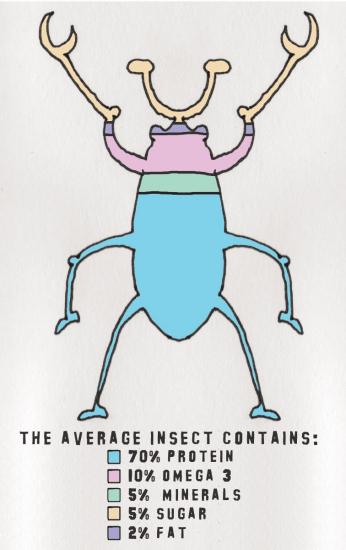William C. McGrew
Source - http://www.sciencedirect.com/science/article/pii/S0047248413002480

Journal of Human Evolution
Abstract
The role of invertebrates in the evolution of human diet has been under-studied by comparison with vertebrates and plants. This persists despite substantial knowledge of the importance of the ‘other faunivory’, especially insect-eating, in the daily lives of non-human primates and traditional human societies, especially hunters and gatherers. Most primates concentrate on two phyla, Mollusca and Arthropoda, but of the latter's classes, insects (especially five orders: Coleoptera, Hymenoptera, Isoptera, Lepidoptera, Orthoptera) are paramount. An insect product, bees' honey, is particularly important, and its collection shows a reversal of the usual sexual division of labor. Human entomophagy involves advanced technology (fire, containers) and sometimes domestication. Insectivory provides comparable calorific and nutritional benefits to carnivory, but with different costs. Much insectivory in hominoids entails elementary technology used in extractive foraging, such as termite fishing by chimpanzees. Elucidating insectivory in the fossil and paleontological record is challenging, but at least nine avenues are available: remains, lithics, residues, DNA, coprolites, dental microwear, stable isotopes, osteology, and depictions. All are in play, but some have been more successful so far than others.